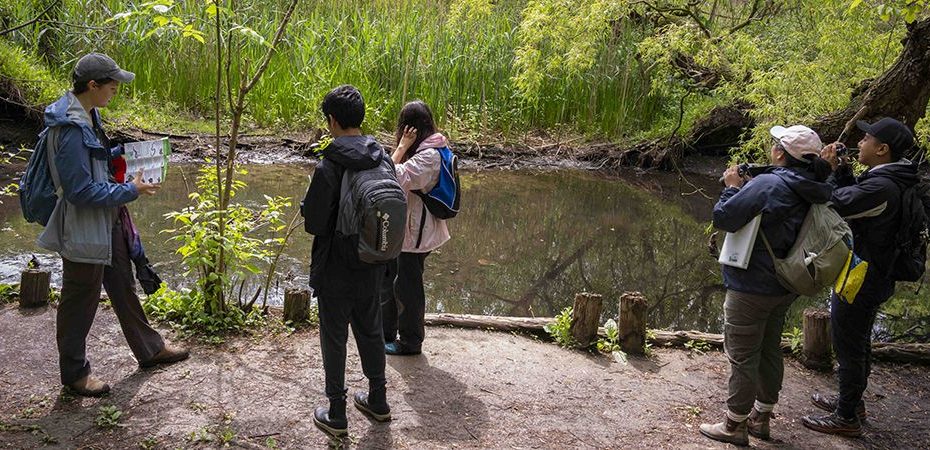When I told my parents that my brother and I would be out on a weekend to go to a snake event, they were more than skeptical. Like more than half the world’s population, they’re not particularly comfortable at the thought of being in snake habitat.
Snakes are one of the most misunderstood and feared animals on the planet. They are often unfairly portrayed in stories as dangerous. Even the mere mention of the animal can make people uneasy. Yet these creatures play a vital role in ecosystems all over the world. This past June, Ontario Nature hosted a Deconstructing Snake Misconceptions event at High Park in Toronto, aiming to demystify the many fears that surround these key species.
We spent the morning walking the trails of High Park, learning about snakes and the local Black Oak Savannah ecosystem from Ontario Nature staff and an Indigenous knowledge holder. Attendees were given guides to familiarize themselves with some of southern Ontario’s most common reptiles and amphibians — including salamanders, turtles, and of course, snakes. Learning how to identify local species can be a gateway for conquering these fears, often leading to a better understanding of snakes.
Although they are known for their deadly strikes and venomous bites, there is only one species of venomous snake in Ontario — the Massasauga rattlesnake. It’s unlikely to be encountered in southern Ontario and is rather elusive in its own habitat. The snake itself is quite small, and it’s unlikely to severely harm the average person due to the small quantity of venom it’s able to inject. In fact, snakes are not naturally aggressive or territorial animals and usually act out of defence.
It’s information like this that can prevent anxiety and panic when encountering notoriously “scary” species; in fact, learning to identify and carefully interact with spiders is what helped me get over my own fear of them. It’s important to remember that most wild animals are more likely to skitter away and see you as a predator than to immediately strike. Limiting physical interactions with wildlife is a surefire way to assure the animal and yourself that neither of you are a danger to the other.
Snakes also serve as vital parts of ecosystems everywhere. Like all animals, they play a key role in the food web; they’re both prey to larger birds and mammals, as well as other snakes, and predators to insects, rodents, and even small amphibians. More importantly, they act as pest control not only in population, but also in ecosystem safety. Many of the species that snakes prey on, like rodents, are transmitters of disease. Gartersnakes, one of the most common snake species in southern Ontario, are known to eat invasive Japanese beetles. Without snakes, pest populations would grow out of control and pose a significant threat to agriculture and the balance of nature.
Despite my love for snakes, I know that my parents still have their reservations about them. The many misconceptions around snakes can make them hard to admire at first, but with awareness and outreach, these fears can be demystified. I hope that more people can learn to appreciate the beauty and importance of snakes, even if it’s from a distance.
This event is generously supported by This event is generously funded by:
Resources
The post Why Snakes Matter: A Deep Dive into Ontario’s Reptilian Residents appeared first on Ontario Nature.
